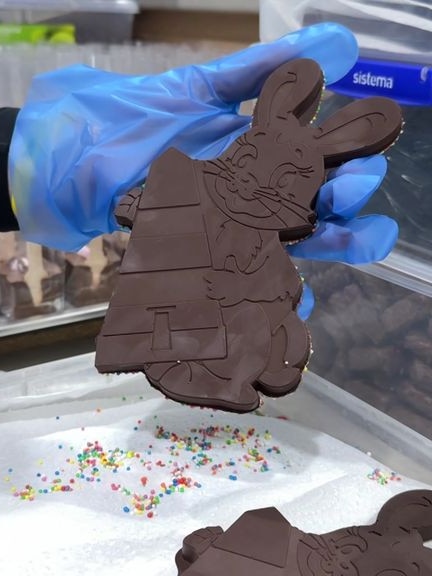Chocolate prices have shot up over the past year because of a worldwide cocoa shortage but Lisa Ruffell, a chocolate shop owner in the South Australian town of Robe, says it has not affected sales ahead of Easter.
“I think if you love chocolate, the price doesn’t really matter,” she said.
“It goes back to the quality of the chocolate.”
Easter is the busiest time for chocolate-makers.
Figures from global agribusiness banking specialist Rabobank show Australian chocolate prices have increased by 8.8 per cent over the past year — more than double the general inflation rate — on the back of a 200 per cent increase in cocoa prices over the same period.
Disease and drought in Africa
More than two-thirds of the world’s cocoa supply comes from West Africa, where there have been considerable climatic challenges for growers.
University of Sydney horticulture chair David Guest has studied global cocoa farming for 40 years.
“The straw that broke the camel’s back was very wet weather in West Africa … that caused an epidemic of black pod disease, which sounds terrible, and it is, but it was followed by a drought, and now they’ve got El Niño,” Professor Guest said.
“The predictions for production this year in West Africa are pretty dire.”
It is a forecast that has sent cocoa futures nearly four times higher than where they have hovered for decades.
“The long-term average over the past 10 or 20 years has been around to US$2,500 ($3,800) a tonne, and now it’s touching $9,000 ($13,650) a tonne,” Professor Guest said.
Other costs go into chocolate
Most chocolate producers order beans or buds in bulk and stockpile them for up to a year, so cost fluctuations take time to have an impact on chocolate prices.
Gabriel Myburgh is the owner of Gabriel Chocolate in Yallingup, Western Australia, where he creates his final product from scratch, starting with raw cocoa beans.
When he placed his most recent order, he said it was more than double what he paid a year earlier.
While he will inevitably need to raise prices, some of the increased bean cost will be absorbed by other more stable ingredients.
“Cocoa is just a portion of the ingredients that go into it and it’s actually, in some cases, quite a small portion,” Mr Myburgh said.
But other costs associated with chocolate sales have also increased.
“It’s also the transport to get it here, it’s the packaging, it’s everything — it’s the whole bundle,” Ms Ruffell said.
“So when we put it onto our consumers, we try to minimise the sort of the percentage that we have to do for the chocolate and hope that people understand. I think they do.”
‘Wicked problem’ to solve
Macquarie University professor John Dumay is part of the team behind Chocolate Scorecard, a website that ranks chocolate manufacturers and retailers according to their sustainability, including how they meet human rights and environmental challenges.
Dr Dumay said manufacturers wanted to keep prices down to make more profit, so they paid farmers less, but then farmers moved to unsustainable practices that could lead to things like deforestation and even slavery.
“How you fix that is what we call a very wicked problem — it’s a structural problem that we need to try to fix and address,” he said.
Rabobank associate analyst Pia Piggott said chocolate was likely to keep getting dearer in the future.
“We expect inflation on chocolate products to remain high and we may see more shrinkflation or product innovations and reformulations as manufacturers seek to minimise cost increases for consumers,” she said.
Get our local newsletter, delivered free each Friday




